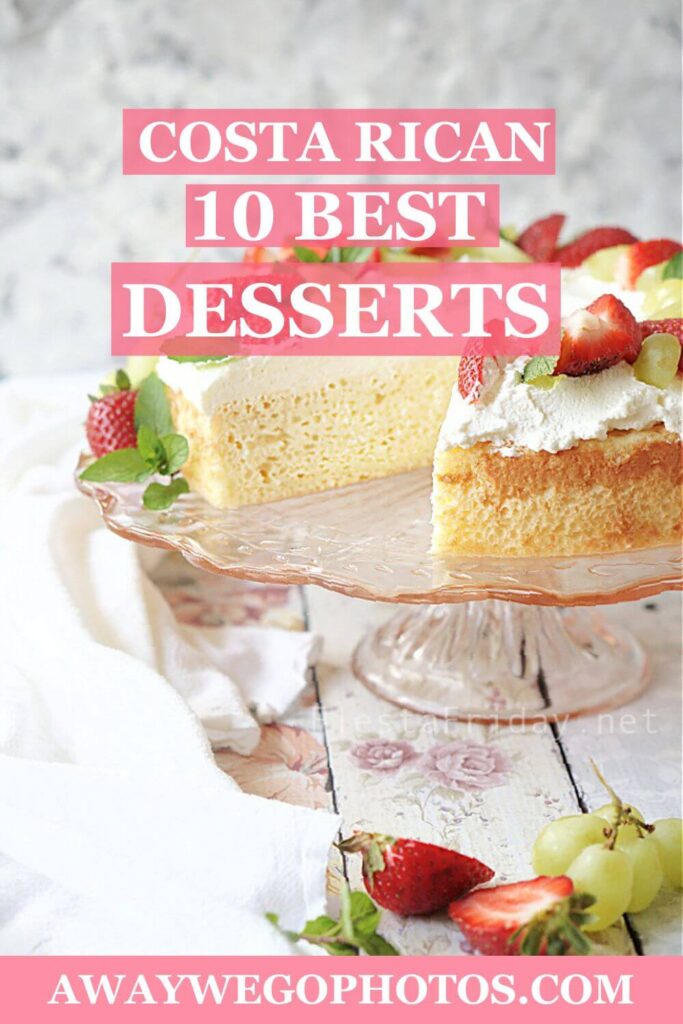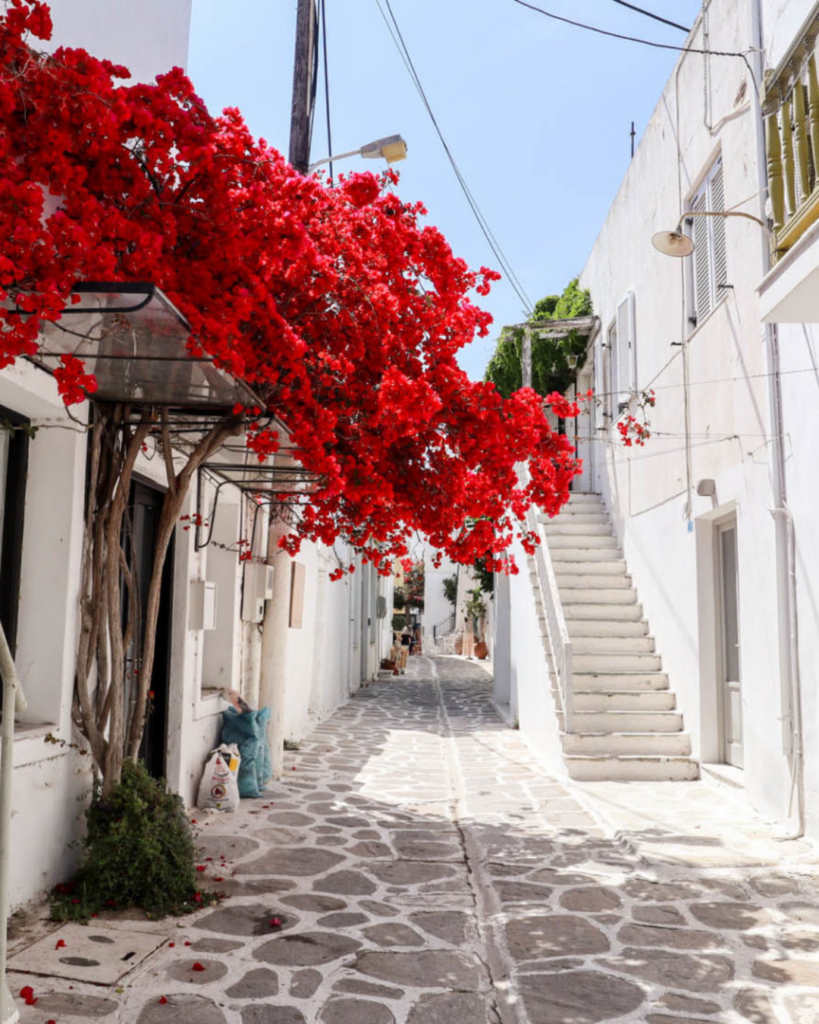Costa Rican desserts are a delightful fusion of indigenous traditions and Spanish influences, resulting in a rich tapestry of sweet treats that reflect the country’s vibrant culinary heritage. Drawing inspiration from the abundant tropical fruits, dairy products, and spices found in the region, Costa Rican desserts are known for their decadent flavors and comforting textures.
From the creamy indulgence of Tres Leches Cake to the aromatic warmth of Arroz con Leche, each dessert tells a story of cultural exchange and culinary innovation. Whether it’s the caramelized goodness of Empanadas de Cajeta or the simplicity of Plátanos Maduros, Costa Rican desserts offer a taste of paradise in every bite, inviting locals and visitors alike to savor the sweetness of this enchanting Central American nation.
Ready to try Costa Rican Desserts!
Tres Leches Cake
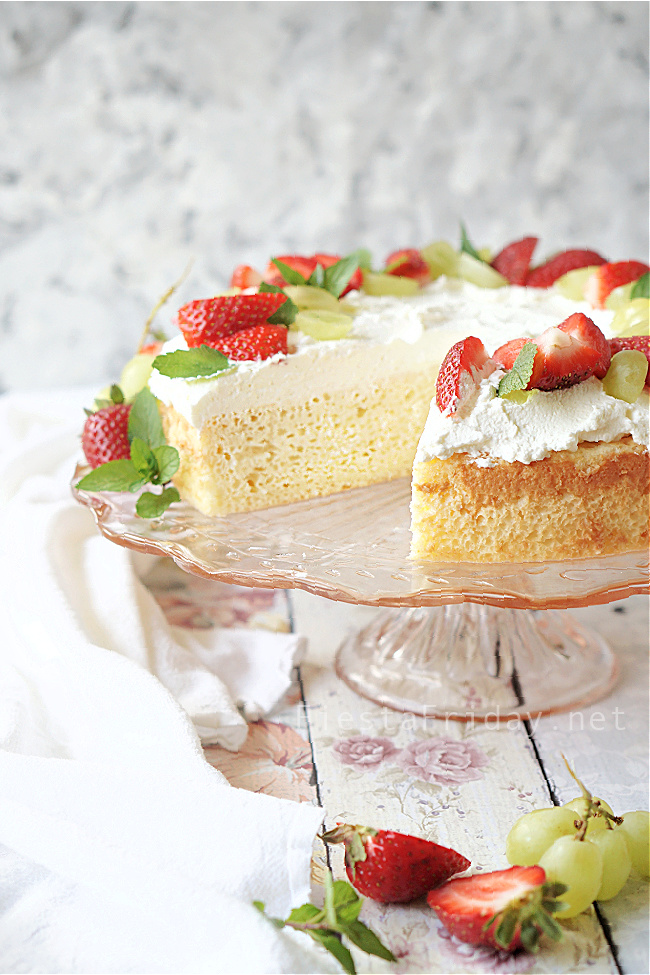
Tres Leches Cake, originating from Latin America including Costa Rica, is a decadent sponge cake soaked in three types of milk—condensed, evaporated, and heavy cream. Its moist texture and rich flavor make it a beloved dessert, perfect for any celebration or indulgent craving.
5 Key Facts
- Origins: Tres Leches Cake is believed to have originated in Latin America, with some sources tracing its roots to Mexico or Nicaragua. It has since become popular throughout the region, including in Costa Rica.
- Three Milks: The name “Tres Leches” translates to “Three Milks” in English, referring to the three types of milk used to soak the cake—condensed milk, evaporated milk, and heavy cream. This combination gives the cake its signature moist and creamy texture.
- Sponge Cake Base: Traditionally, Tres Leches Cake is made with a light and airy sponge cake as its base. The cake is baked and then pierced with a fork or skewer to allow the milk mixture to fully penetrate and soak into the cake.
- Variations: While the classic Tres Leches Cake consists of a vanilla sponge cake soaked in the milk mixture, there are many variations to suit different tastes. Some recipes include flavorings such as rum or vanilla extract, while others incorporate toppings like whipped cream, fruit, or caramel.
- Popularity: Tres Leches Cake is a beloved dessert not only in Latin America but also in many other parts of the world. Its irresistible combination of sweetness and creaminess has made it a favorite choice for celebrations, gatherings, and indulgent treats.
Recipes to try
Arroz con Leche
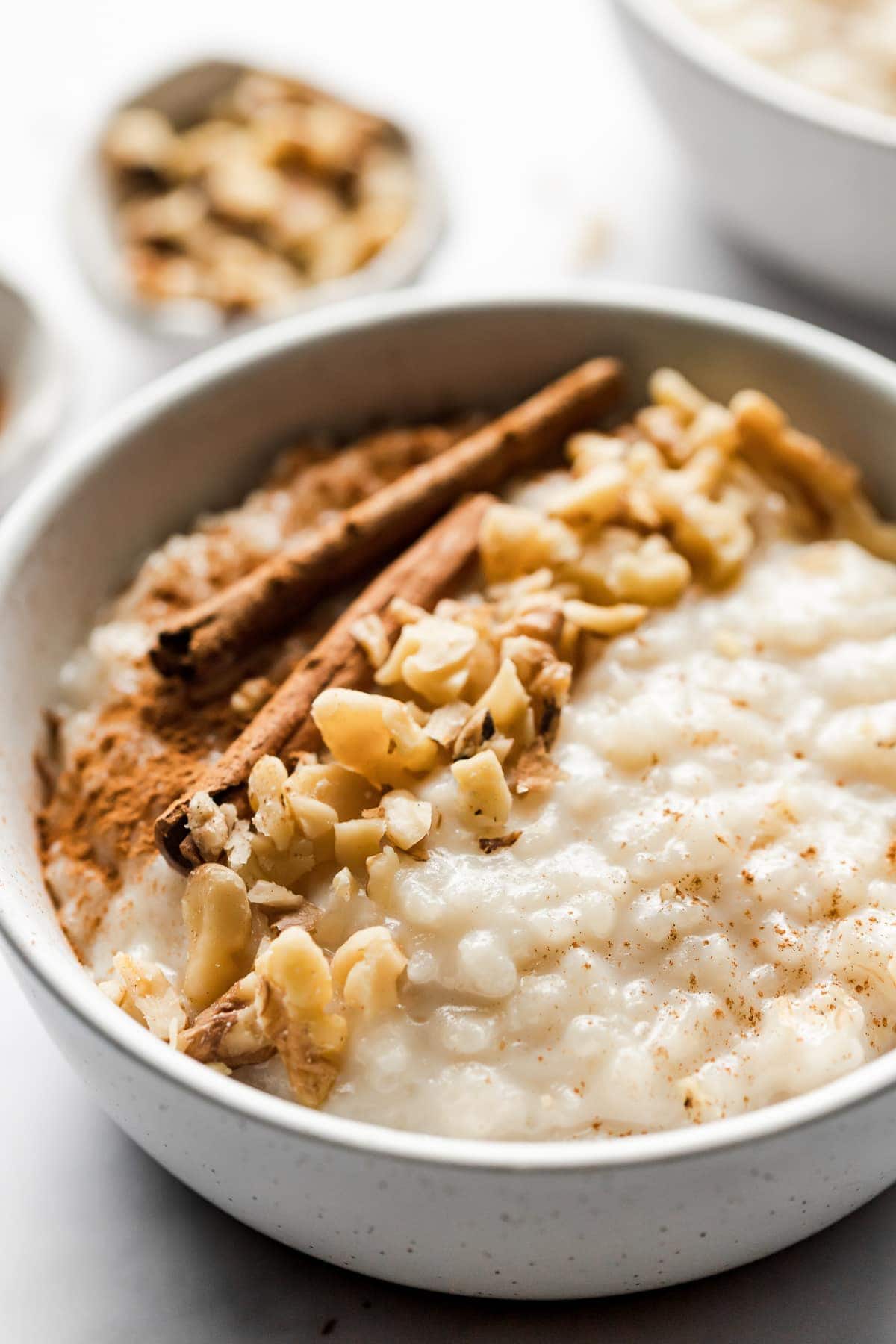
Arroz con Leche is a traditional Latin American dessert, including in Costa Rica, made with rice cooked in milk and sweetened with sugar. Flavored with cinnamon and sometimes cloves or nutmeg, this creamy and comforting dessert is enjoyed warm or cold.
5 Key Facts
- Historical Roots: Arroz con Leche has a long history dating back centuries, with variations found in numerous cultures around the world, including Spain, Mexico, and Costa Rica. Its exact origins are debated, but it is widely considered a dish with Moorish influence.
- Simple Ingredients: This dessert typically consists of just a few basic ingredients: rice, milk, sugar, and spices. The rice is cooked in milk until tender, absorbing the creamy sweetness of the liquid.
- Variations: While the basic recipe remains consistent, there are numerous regional and personal variations. Some recipes include ingredients like condensed milk, raisins, lemon zest, or even coconut milk, adding layers of flavor and texture.
- Cultural Significance: Arroz con Leche is not only a delicious dessert but also holds cultural significance in many communities. It is often served during holidays, celebrations, and family gatherings, symbolizing warmth, comfort, and togetherness.
- Serving Methods: Arroz con Leche can be enjoyed hot, warm, or cold, depending on personal preference and tradition. It is commonly garnished with a sprinkle of ground cinnamon or a cinnamon stick for added flavor and presentation.
Recipes to try
Flan
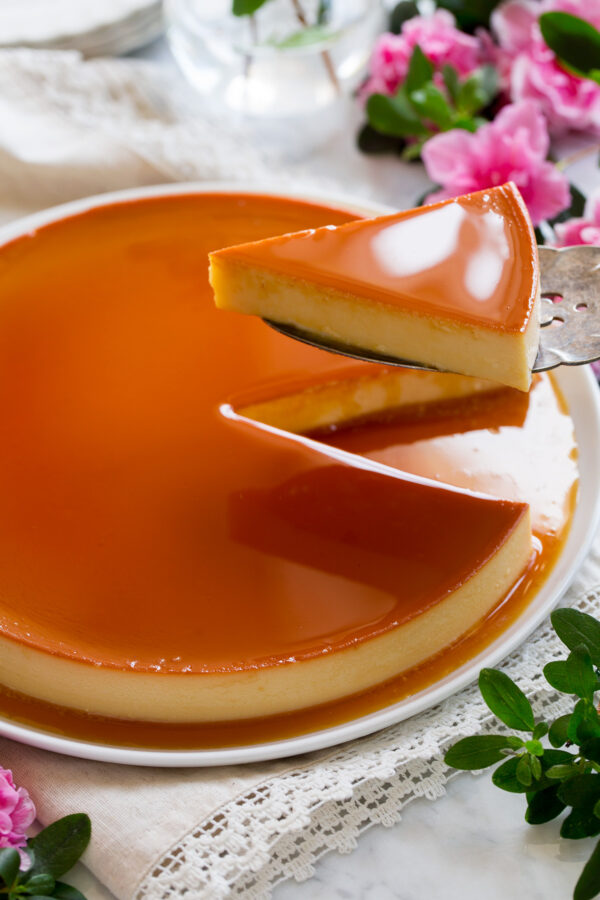
Flan is a classic Latin American dessert enjoyed in Costa Rica and beyond. This creamy custard is made with eggs, milk, and sugar, then baked until set. It’s served inverted, allowing the caramel sauce to drizzle over the silky-smooth custard, creating a decadent treat.
5 Key Facts
- Ancient Origins: Flan’s roots can be traced back to Ancient Rome, where it was known as “flado,” a savory dish. Over time, it evolved into the sweet dessert we recognize today, with Spanish and Latin American cultures adopting and adapting it.
- Simple Ingredients: Flan is made from basic ingredients such as eggs, milk, sugar, and vanilla. The key to its smooth texture and rich flavor is the caramelized sugar, which forms a luscious sauce when inverted.
- Custard Creation: The custard base is prepared by combining eggs, milk, and sugar, often flavored with vanilla or other extracts. This mixture is then poured over a layer of caramelized sugar in a mold and baked in a water bath until set.
- Caramelization Technique: Making the caramel sauce involves melting sugar until it reaches a deep amber color, then pouring it into the bottom of the mold. This step adds a contrasting sweetness and a glossy finish to the dessert.
- Global Popularity: Flan is beloved worldwide, with variations found in many cultures. In addition to the classic vanilla flavor, variations include chocolate, coconut, coffee, and even savory versions with cheese. It’s a versatile dessert enjoyed on its own or as part of a larger meal.
Recipes to try
Empanadas de Cajeta
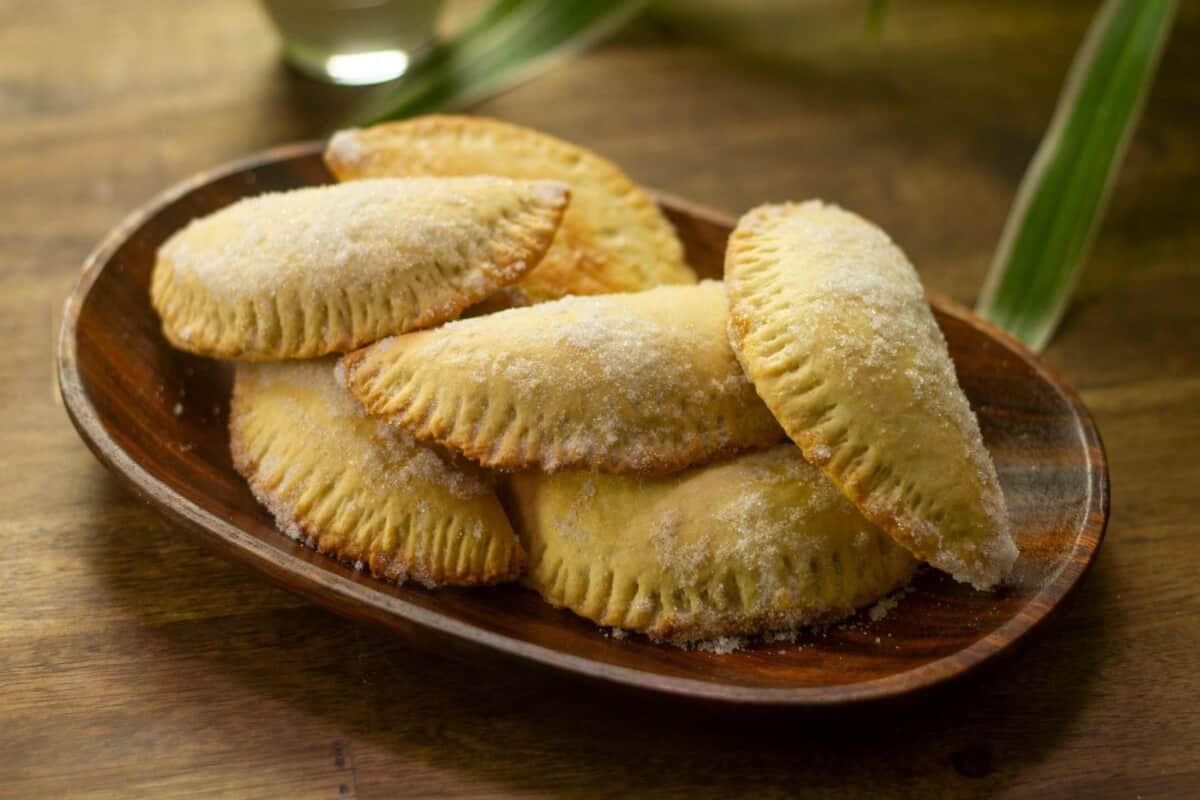
Empanadas de Cajeta are a sweet delicacy originating from Costa Rica and other Latin American countries. These pastries feature a flaky dough filled with cajeta, a caramel made from goat’s milk. Once baked to golden perfection, they offer a delectable combination of buttery pastry and rich, caramelized sweetness.
5 Key Facts
- Traditional Treat: Empanadas de Cajeta are a traditional dessert enjoyed in Costa Rica and various Latin American countries. They are often made during special occasions and celebrations, showcasing the region’s culinary heritage.
- Cajeta Filling: The filling of these empanadas is typically made from cajeta, a type of caramel sauce made from goat’s milk. Cajeta is cooked slowly until it thickens and develops a rich, caramelized flavor.
- Flaky Dough: The outer shell of Empanadas de Cajeta is made from a flaky pastry dough, similar to that used in savory empanadas. This dough is rolled out thinly, filled with cajeta, and folded or sealed before baking.
- Baking Method: Empanadas de Cajeta are baked until golden brown and crispy. This baking process allows the pastry to develop a beautiful golden color and a satisfying crunch while the cajeta filling becomes warm and gooey.
- Variations: While the classic Empanadas de Cajeta feature a cajeta filling, there are variations that include other fillings such as dulce de leche, fruit preserves, or chocolate. These variations offer a range of flavors to suit different preferences and tastes.
Recipes to try
Brazo de Reina
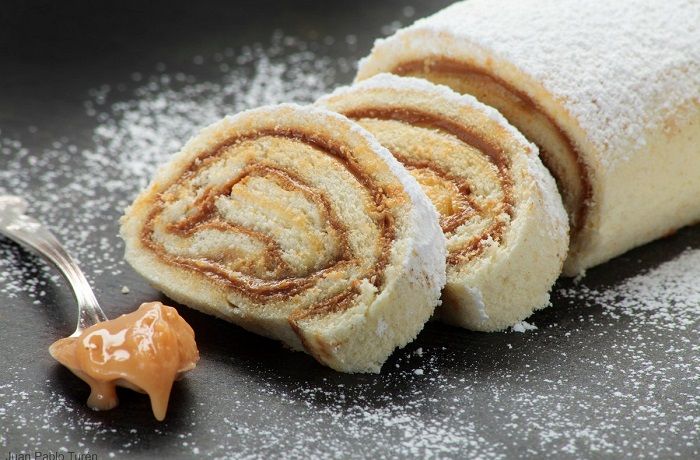
Brazo de Reina, meaning “Queen’s Arm” in Spanish, is a rolled sponge cake dessert popular in Costa Rica and Latin America. It typically consists of a light sponge cake filled with dulce de leche or guava jam, creating a sweet and decadent treat fit for royalty.
5 Key Facts
- Latin American Specialty: Brazo de Reina, translating to “Queen’s Arm,” is a beloved dessert throughout Latin America, including Costa Rica. Its name is thought to derive from its cylindrical shape resembling a royal sleeve.
- Sponge Cake Base: This dessert features a delicate sponge cake as its foundation. The sponge cake is typically light and airy, providing the perfect canvas for the sweet filling.
- Sweet Filling: Brazo de Reina is traditionally filled with dulce de leche, a thick caramel made from sweetened condensed milk, or guava jam, which adds a fruity and tangy flavor. The filling adds richness and depth to each bite.
- Rolling Technique: The sponge cake is carefully rolled around the filling, creating a spiral-shaped log. This rolling technique ensures that each slice reveals layers of cake and filling, making for an elegant presentation.
- Variations: While the classic Brazo de Reina features dulce de leche or guava jam filling, there are variations that incorporate different flavors such as chocolate, fruit preserves, or cream. These variations offer versatility and cater to diverse tastes.
Recipes to try
Cajeta de Coco
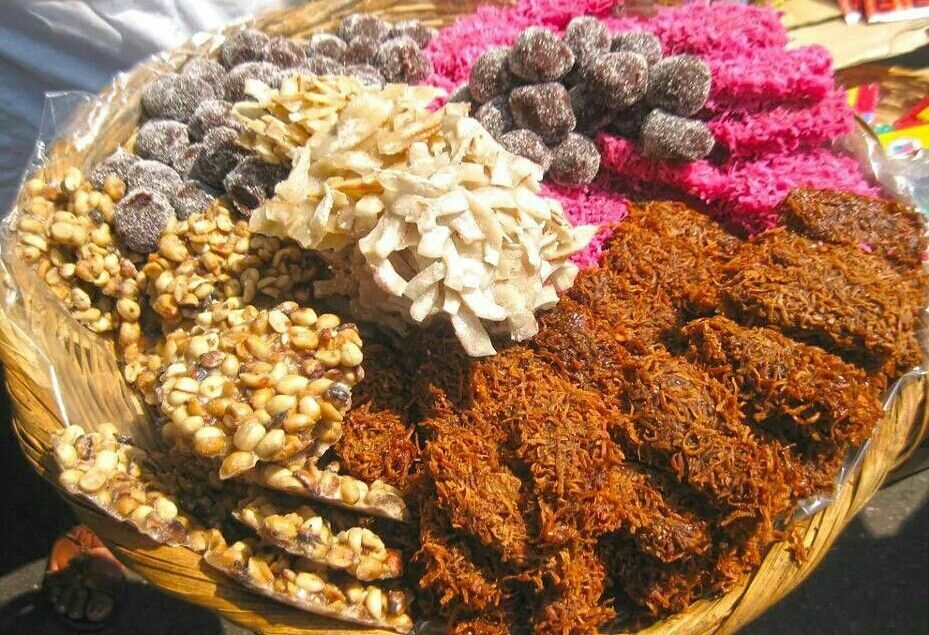
Cajeta de Coco is a traditional Costa Rican dessert made from grated coconut and caramelized sugar. This sweet treat is cooked until thick and creamy, then shaped into small balls or bars. Its rich coconut flavor and caramel sweetness make it a delightful indulgence.
5 Key Facts
- Coconut Confection: Cajeta de Coco is a beloved Costa Rican dessert crafted from grated coconut and caramelized sugar. This combination results in a confectionery delight that boasts a rich coconut flavor with a caramelized sweetness.
- Caramelization Process: The creation of Cajeta de Coco involves slowly cooking grated coconut with sugar until it reaches a thick and creamy consistency. This process caramelizes the sugar and infuses the coconut with its sweet flavor.
- Traditional Treat: Cajeta de Coco holds a special place in Costa Rican culinary heritage, often enjoyed during holidays, festivals, and family gatherings. It represents a fusion of indigenous ingredients and culinary techniques passed down through generations.
- Versatile Presentation: While the traditional form of Cajeta de Coco is shaped into small balls or bars, it can also be found in other presentations such as spreads, fillings, or layered in desserts. Its versatility allows for various culinary applications.
- Regional Variations: While the core ingredients remain consistent, there may be regional variations in the preparation and presentation of Cajeta de Coco across different parts of Costa Rica. These variations may include differences in texture, sweetness levels, or additional flavorings.
Recipes to try
Queque de Banano
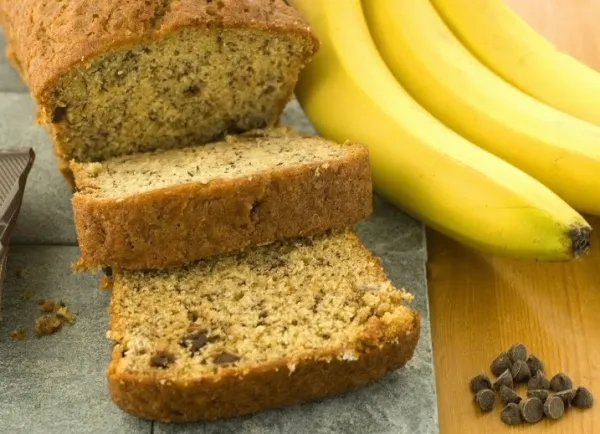
Queque de Banano, or Banana Cake, is a popular Costa Rican dessert featuring ripe bananas as the star ingredient. This moist and flavorful cake is often infused with cinnamon and sometimes nuts or chocolate chips, offering a deliciously comforting treat for any occasion.
5 Key Facts
- Banana Richness: Queque de Banano is renowned for its abundant use of ripe bananas, which not only add natural sweetness but also moisture and flavor to the cake. It’s an excellent way to utilize overripe bananas.
- Moist Texture: The mashed bananas contribute to the cake’s incredibly moist texture, making it dense yet tender. This quality enhances the overall enjoyment of the cake, ensuring a delightful eating experience.
- Aromatic Spices: Cinnamon is a common addition to Queque de Banano, infusing the cake with warm and aromatic flavors that complement the sweetness of the bananas. Some recipes may also incorporate other spices like nutmeg or cloves for added depth.
- Versatile Recipe: While the basic recipe for Queque de Banano typically includes flour, sugar, eggs, and baking powder along with mashed bananas, there’s ample room for creativity. Variations may include the addition of nuts, chocolate chips, or even a swirl of dulce de leche for extra indulgence.
- Popular Snack or Dessert: Queque de Banano is enjoyed throughout Costa Rica as a beloved snack or dessert. Whether served with a cup of coffee for breakfast or as a comforting treat during afternoon tea, it’s a versatile and universally loved delicacy.
Recipes to try
Churros
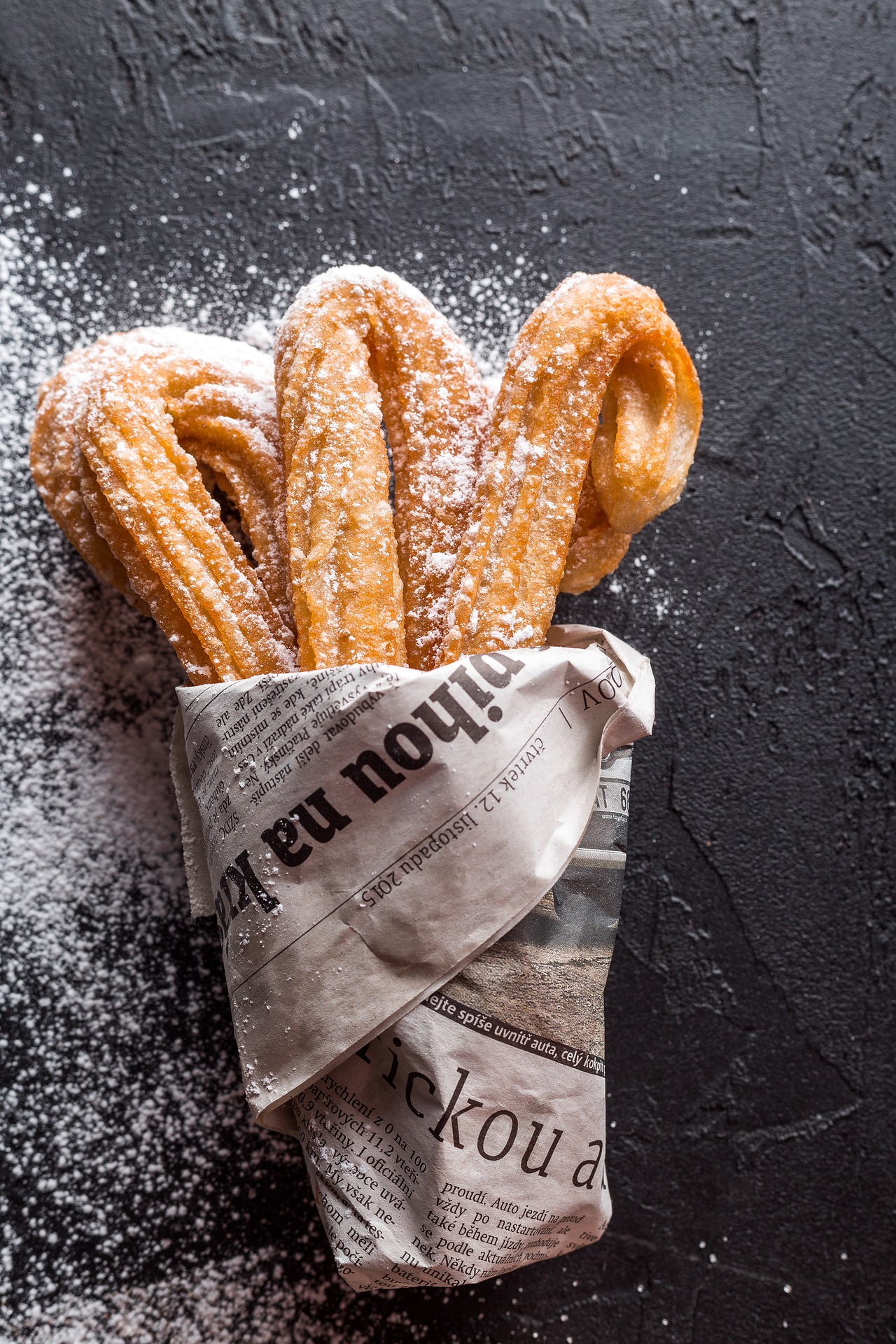
Churros are a beloved treat in Costa Rica and beyond, consisting of fried dough pastry dusted with cinnamon sugar. Crispy on the outside, soft on the inside, they’re often enjoyed dipped in chocolate sauce or dulce de leche, making for a deliciously indulgent snack or dessert.
5 Key Facts
- Spanish Origin: Churros have their origins in Spain, where they were introduced by Spanish shepherds. Over time, they became popular throughout Latin America, including Costa Rica, where they are enjoyed as a beloved treat.
- Simple Ingredients: Churros are made from a simple dough of flour, water, and salt, which is piped through a star-shaped nozzle and then fried until golden brown and crispy.
- Cinnamon Sugar Coating: After frying, churros are traditionally rolled in a mixture of cinnamon and sugar, imparting a sweet and aromatic flavor to the crispy exterior.
- Dipping Sauces: Churros are often served with a variety of dipping sauces for added flavor and indulgence. Common choices include chocolate sauce, dulce de leche, or caramel, enhancing the overall taste experience.
- Versatility: While the classic churro is a straight, elongated shape, there are many variations to suit different preferences. Some churros are twisted, filled with cream or chocolate, or even formed into loops or spirals, offering a range of textures and flavors.
Recipes to try
Plátanos Maduros
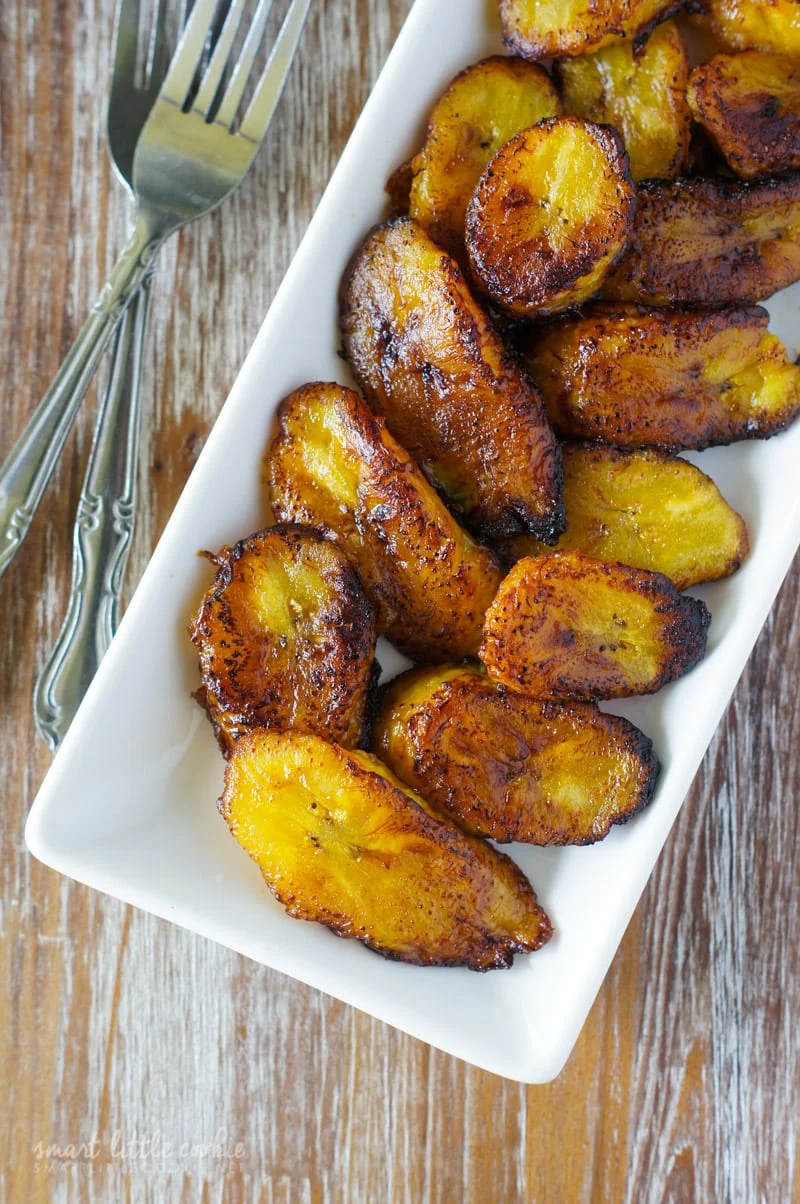
Plátanos Maduros, or ripe plantains, are a staple in Costa Rican cuisine. These sweet and tender fruits are sliced and fried until caramelized, resulting in a deliciously comforting side dish or dessert. They’re often enjoyed with a sprinkle of cinnamon for added flavor.
5 Key Facts
- Versatile Fruit: Plátanos Maduros are ripe plantains that can be enjoyed in various ways, both savory and sweet. They are a staple in Costa Rican cuisine and are often served as a side dish, snack, or dessert.
- Ripe vs. Unripe: Unlike their unripe counterparts, which are starchy and used in savory dishes, ripe plantains are sweet and soft. They develop a yellow to black skin when fully ripe, indicating their readiness for cooking.
- Caramelization: Plátanos Maduros are typically sliced and fried until golden brown and caramelized. This cooking process brings out their natural sweetness, resulting in a deliciously caramelized exterior and a soft, tender interior.
- Sweetness Enhancement: While Plátanos Maduros are naturally sweet, they are often enhanced with a sprinkle of cinnamon after frying. This addition adds a warm and aromatic flavor that complements the natural sweetness of the plantains.
- Cultural Significance: Plátanos Maduros hold cultural significance in Costa Rica and are enjoyed as a comfort food and a symbol of home-cooked meals. They are a versatile ingredient that adds sweetness and depth to a wide range of dishes.
Recipes to try
Natilla

Natilla is a creamy pudding dessert enjoyed in Costa Rica and throughout Latin America. Made with milk, sugar, and cornstarch, it is flavored with cinnamon and sometimes vanilla. Natilla is cooked until thickened, resulting in a smooth and comforting treat often served during special occasions.
5 Key Facts
- Latin American Tradition: Natilla is a traditional dessert enjoyed in many Latin American countries, including Costa Rica. It holds cultural significance and is often served during holidays and special occasions, such as Christmas and Easter.
- Simple Ingredients: Natilla is made from basic ingredients such as milk, sugar, cornstarch, and flavorings like cinnamon and vanilla. The combination of these ingredients creates a creamy and flavorful pudding.
- Thickening Agent: Cornstarch is used as a thickening agent in Natilla, giving it its characteristic smooth and pudding-like consistency. The mixture is cooked over low heat until it thickens to the desired texture.
- Flavor Variations: While the classic Natilla recipe includes cinnamon as a primary flavoring, variations may incorporate other spices such as nutmeg or cloves for added depth of flavor. Some recipes also include ingredients like egg yolks or condensed milk for richness.
- Serving Methods: Natilla can be served warm, at room temperature, or chilled, depending on personal preference. It is often garnished with a sprinkle of ground cinnamon on top for presentation and additional flavor.
Recipes to try
Like this Post? Save it on Pinterest!
